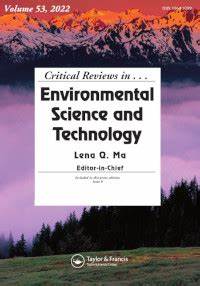环境中重金属控制从检测到分离和回收的进展:新兴的微流体策略
IF 13.2
1区 环境科学与生态学
Q1 ENVIRONMENTAL SCIENCES
Critical Reviews in Environmental Science and Technology
Pub Date : 2025-07-03
DOI:10.1080/10643389.2025.2483534
引用次数: 0
摘要
调查重金属的命运,特别是自然环境过程,需要创新和精确的技术,可以在微观尺度上提供知识。近年来,随着重金属在环境中的普遍存在性、不可降解性、生物蓄积性、迁移性和反应性的实现,微流控技术在重金属控制方面的突破加快。本文综述了近年来微流体在重金属控制、检测、分离和回收等方面的应用进展。在微反应器中,基于液滴的系统在检测微量污染物方面表现出色,通过增强混合和反应效率,检测限低于0.5 μ g/L。在分离方面,液液萃取微反应器脱颖而出,在特定的流量和pH条件下,其优化的界面对镉(Cd)的萃取效率高达99.3%。在回收领域,电化学微反应器已经显示出选择性沉积的潜力,在优化的电流密度和定制的电极材料下实现高回收率。未来的工作将集中在微流控系统/平台的功能集成和规模扩展的设计和开发上,特别是在微流控装置设计和组装的灵活性以及传质、传热和反应的效率方面。微流控系统精确的过程控制特性使其在环境监测、污染控制和资源回收等方面具有很大的应用前景。本文章由计算机程序翻译,如有差异,请以英文原文为准。
Advancements of heavy metals control in the environment from detection to separation and recovery: Emerging microfluidics strategy
Investigating the fate of heavy metals, especially natural environmental processes, requires innovation and precise technologies that can offer knowledge at the microscopic scale. Breakthrough of the microfluidics involved in heavy metals control has accelerated in recent years along with realization of the ubiquity, non-degradability, bioaccumulation, mobility and reactivity of heavy metals in the environment. This review explores recent advances in microfluidic applications for heavy metal control, spanning detection, separation, and recovery. Among microreactors, droplet-based systems demonstrate exceptional performance in detecting trace contaminants, achieving detection limits below 0.5 µg/L through enhanced mixing and reaction efficiency. For separation, liquid-liquid extraction microreactors stand out, with optimized interfaces yielding extraction efficiencies of up to 99.3% for cadmium (Cd) under specific flow and pH conditions. In the realm of recovery, electrochemical microreactors have shown potential for selective deposition, achieving high recovery rates at optimized current densities and tailored electrode materials. Future work will focus on the design and development of functional integration and scale-up of microfluidic systems/platforms, particularly in terms of the flexibility of microfluidic device design and assembly, as well as the efficiency of mass and heat transfer and reactions. The precise process control characteristics of microfluidic systems make them highly promising for applications in environmental monitoring, pollution control, and resource recovery.
求助全文
通过发布文献求助,成功后即可免费获取论文全文。
去求助
来源期刊
CiteScore
27.30
自引率
1.60%
发文量
64
审稿时长
2 months
期刊介绍:
Two of the most pressing global challenges of our era involve understanding and addressing the multitude of environmental problems we face. In order to tackle them effectively, it is essential to devise logical strategies and methods for their control. Critical Reviews in Environmental Science and Technology serves as a valuable international platform for the comprehensive assessment of current knowledge across a wide range of environmental science topics.
Environmental science is a field that encompasses the intricate and fluid interactions between various scientific disciplines. These include earth and agricultural sciences, chemistry, biology, medicine, and engineering. Furthermore, new disciplines such as environmental toxicology and risk assessment have emerged in response to the increasing complexity of environmental challenges.
The purpose of Critical Reviews in Environmental Science and Technology is to provide a space for critical analysis and evaluation of existing knowledge in environmental science. By doing so, it encourages the advancement of our understanding and the development of effective solutions. This journal plays a crucial role in fostering international cooperation and collaboration in addressing the pressing environmental issues of our time.

 求助内容:
求助内容: 应助结果提醒方式:
应助结果提醒方式:


